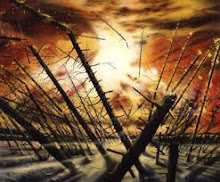A meteorite is a portion of a meteoroid or asteroid that survives its passage through the atmosphere and impact with the ground without being destroyed. Meteorites are sometimes, but not always, found in association with hypervelocity impact craters; during energetic collisions, the entire impactor may be vaporized, leaving no meteorites.
Source : http://en.wikipedia.org/wiki/Meteoroid
Thursday, 31 May 2012
What Is A Meteor?
A meteor is the visible path of a meteoroid that has entered the Earth's atmosphere. Meteors typically occur in the mesosphere, and most range in altitude from 75 km to 100 km. Millions of meteors occur in the Earth's atmosphere every day. Most meteoroids that cause meteors are about the size of a pebble.
The velocities of meteors result from the movement of the Earth around the Sun with about 30 km/s, the orbital speeds of meteoroids, and the gravitational attraction of the Earth.
Source : http://en.wikipedia.org/wiki/Meteoroid
The velocities of meteors result from the movement of the Earth around the Sun with about 30 km/s, the orbital speeds of meteoroids, and the gravitational attraction of the Earth.
Source : http://en.wikipedia.org/wiki/Meteoroid
What Is A Meteoroid?
As of 2011 the International Astronomical Union officially defines a meteoroid as "a solid object moving in interplanetary space, of a size considerably smaller than an asteroid and considerably larger than an atom". Beech and Steel, writing in Quarterly Journal of the Royal Astronomical Society, proposed a new definition where a meteoroid is between 100 µm and 10 m across. Following the discovery and naming of asteroids below 10 m in size, Rubin and Grossman refined the Beech and Steel definition of meteoroid to objects between 10 µm and 1 m in diameter. The NEO definition includes larger objects, up to 50 m in diameter, in this category. Very small meteoroids are known as micrometeoroids .
The composition of meteoroids can be determined as they pass through Earth's atmosphere from their trajectories and the light spectra of the resulting meteor. Their effects on radio signals also give information, especially useful for daytime meteors which are otherwise very difficult to observe. From these trajectory measurements, meteoroids have been found to have many different orbits, some clustering in streams (see Meteor showers) often associated with a parent comet, others apparently sporadic. Debris from meteoroid streams may eventually be scattered into other orbits. The light spectra, combined with trajectory and light curve measurements, have yielded various compositions and densities, ranging from fragile snowball-like objects with density about a quarter that of ice, to nickel-iron rich dense rocks.
Meteoroids travel around the Sun in a variety of orbits and at various velocities. The fastest ones move at about 26 miles per second (42 kilometers per second) through space in the vicinity of Earth's orbit. The Earth travels at about 18 miles per second (29 kilometers per second). Thus, when meteoroids meet the Earth's atmosphere head-on (which would only occur if the meteors were in a retrograde orbit), the combined speed may reach about 44 miles per second (71 kilometers per second). Meteoroids moving through the earth's orbital space average about 20 km/sec.
Source : http://en.wikipedia.org/wiki/Meteoroid
Subscribe to:
Posts (Atom)



